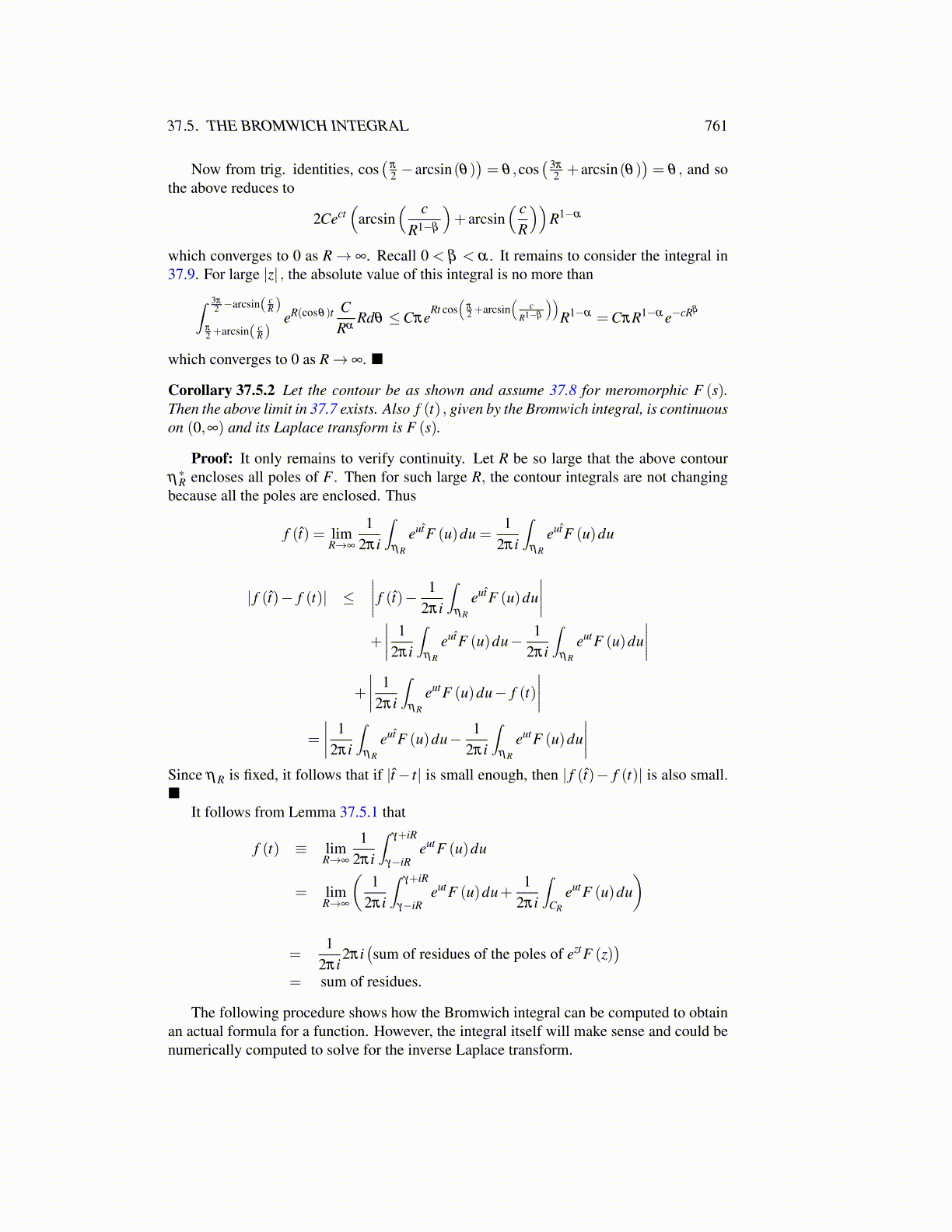
37.5. THE BROMWICH INTEGRAL 761
Now from trig. identities, cos(
π
2 − arcsin(θ))= θ ,cos
( 3π
2 + arcsin(θ))= θ , and so
the above reduces to
2Cect(
arcsin( c
R1−β
)+ arcsin
( cR
))R1−α
which converges to 0 as R→ ∞. Recall 0 < β < α . It remains to consider the integral in37.9. For large |z| , the absolute value of this integral is no more than∫ 3π
2 −arcsin( cR )
π2 +arcsin( c
R )eR(cosθ)t C
RαRdθ ≤Cπe
Rt cos(
π2 +arcsin
(c
R1−β
))R1−α =CπR1−α e−cRβ
which converges to 0 as R→ ∞. ■
Corollary 37.5.2 Let the contour be as shown and assume 37.8 for meromorphic F (s).Then the above limit in 37.7 exists. Also f (t) , given by the Bromwich integral, is continuouson (0,∞) and its Laplace transform is F (s).
Proof: It only remains to verify continuity. Let R be so large that the above contourη∗R encloses all poles of F . Then for such large R, the contour integrals are not changingbecause all the poles are enclosed. Thus
f (t̂) = limR→∞
12πi
∫ηR
eut̂F (u)du =1
2πi
∫ηR
eut̂F (u)du
| f (t̂)− f (t)| ≤∣∣∣∣ f (t̂)− 1
2πi
∫ηR
eut̂F (u)du∣∣∣∣
+
∣∣∣∣ 12πi
∫ηR
eut̂F (u)du− 12πi
∫ηR
eutF (u)du∣∣∣∣
+
∣∣∣∣ 12πi
∫ηR
eutF (u)du− f (t)∣∣∣∣
=
∣∣∣∣ 12πi
∫ηR
eut̂F (u)du− 12πi
∫ηR
eutF (u)du∣∣∣∣
Since ηR is fixed, it follows that if |t̂− t| is small enough, then | f (t̂)− f (t)| is also small.■
It follows from Lemma 37.5.1 that
f (t) ≡ limR→∞
12πi
∫γ+iR
γ−iReutF (u)du
= limR→∞
(1
2πi
∫γ+iR
γ−iReutF (u)du+
12πi
∫CR
eutF (u)du)
=1
2πi2πi(sum of residues of the poles of eztF (z)
)= sum of residues.
The following procedure shows how the Bromwich integral can be computed to obtainan actual formula for a function. However, the integral itself will make sense and could benumerically computed to solve for the inverse Laplace transform.